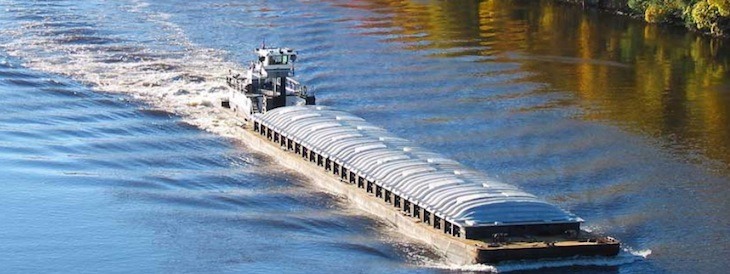Ports America, Union Pacific to explore possible multimodal port in Crawford County
by March 5, 2018 7:10 pm 2,419 views

The Western Arkansas Intermodal Authority (WAIA, formerly RITA) has entered into a memorandum of understanding (MOU) with Ports America to explore development of a multimodal logistics park and integrated river port terminal.
The target area will be “situated on a large tract of land within the Crawford County Levee near the existing Class 1 Railway Service (Union Pacific and Kansas City Southern Railroads), Interstate 540, and Interstate 40,” according to the agreement.
The two groups finalized their six-month MOU following a public meeting on Monday (March 5) at the University of Arkansas at Fort Smith (UAFS) Windgate Art & Design building. The agreement gives Ports America exclusivity in exploring the development through Sept. 5, 2018, due to the “substantial effort and expense” the company will have to perform in the “performance of due diligence necessary to enter into” such a transaction.
The agreement will be extendable only if mutually agreed to by the parties. As consultant John Vickerman of Vickerman & Associates noted, “At six months and one day, you can take my study out for requests for expressions of interest (RFEIs), if that’s what you want to do.”
Vickerman’s final presentation on the $200,050 study paid for by a five-member body consisting of the city governments of Fort Smith and Van Buren, Sebastian and Crawford counties, and the Fort Chaffee Redevelopment Authority (FCRA), was the reason for Monday’s meeting. Vickerman told audience members Ports America had approached him prior to his finishing the study with a declaration of interest.
In addition to the four-page document pre-signed by Ports America Chief Strategic Officer (CSO) Peter Ford — not in attendance Monday — Union Pacific Railroad sent a separate one-page letter to Western Arkansas Planning and Development District (WAPDD) Executive Director Sasha Grist expressing interest in the partnership.
Eric Watkins, the company’s senior director of economic and industrial development, said UP “stands ready to provide premiere freight rail transportation for prospective customers at such a facility,” adding the company would be ready “to provide freight rail advice and guidance on the further pursuit of industrial development with the Western Arkansas Planning & Development District.”
The WAIA Board unanimously approved the MOU following Vickerman’s final presentation.
Vickerman said he expects should one of the parties — UP or Ports America — pull out of the exploration, the other would have interest in continuing. He also expects if one of the two outside parties sees enough value in the project over the next six months, they could have a multimodal facility up and running “inside of five years,” though it would likely be longer if construction happens on the river side of the levee — something that would require further dredging to 12 feet from nine. As a point of comparison, Vickerman noted the Port of Oakland’s inner harbor dredging project took 34 years when factoring in the necessary federal approvals.
Vickerman has worked on 67 of the 90 North American deep water ports, including two of the largest in New Orleans and Chicago.
Ports America is the largest privately-held container terminal operator in North America operating in more than 80 terminals at 42 ports nationwide. It handles more than 13.4 million twenty-foot equivalent units (TEU), which is approximately 35% of the 40 million TEU industry. As of 2015, it ran 2.5 million vehicles, 10.1 million tons of general cargo, and 1.7 million cruise ship passengers. Ports America’s services include container, bulk, breakbulk, military, and project cargo; cruise terminals; intermodal facilities; maintenance and repair; and roll-on/roll-off (RoRo) operations.
Union Pacific is the largest U.S. Class I freight railroad by revenue, with $23.988 billion in annual revenues reported in 2015, just ahead of BNSF Railway’s $23.239 billion. UP serves the food processing, forest products, and poultry industries. Major commodities include soybeans, cotton, rice, bauxite, manganese, and glass. It hauls much of the western coal used by local electrical generating plants as well, and it invested more than $778 million in Arkansas transportation infrastructure from 2012 to 2016.
